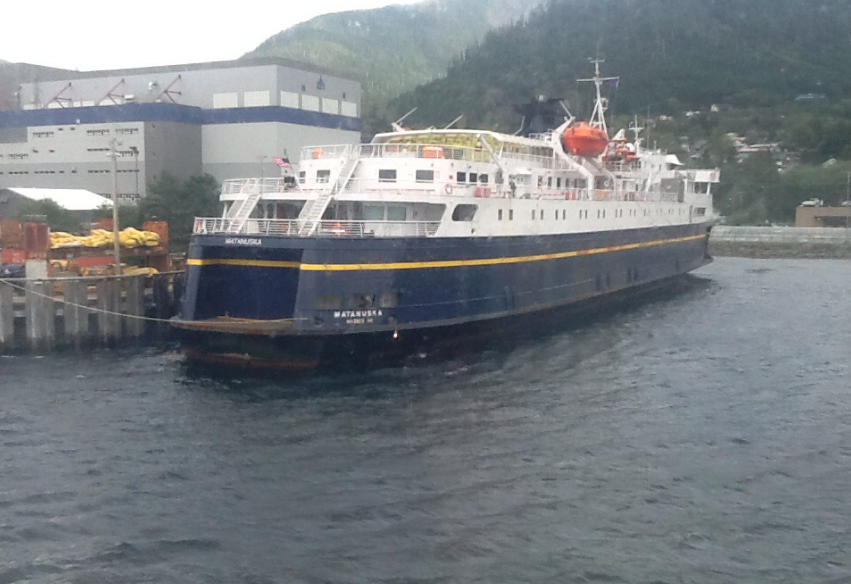
AMHS Ferry Matanuska docked in Ketchikan / Creative Commons photo
GUEST COMMENTARY
By DENNY DEWITT
JUNEAU – In a grocery store here, a sign was posted with this message: “Attention Customers, due to the ferry system breakdown, our normal Monday delivery will be delayed until Wednesday. We are sorry and ask for your understanding.”
It reminded me why we need an integrated transportation plan in Southeast Alaska that includes shuttle ferries and roads. It is critical that the long-term regional transportation plan include greater development of Southeast Alaska’s road system.
Road system development begins with Juneau Access, a project that is funded and is close to EPA approval.
The Alaska Marine Highway System has evolved into a marine transportation system with 11 vessels carrying passengers and freight in Southeast Alaska, Prince William Sound and Southwest Alaska.
The ferries serve as essential transportation infrastructure for many of the region’s smaller communities, providing important year-round passenger, vehicle, and freight service. As we can see from the store’s message about lack of inventory, it is being stretched beyond its reasonable expectation.
Ferry ridership generates only about one-third of the revenue necessary to fund the system’s $160 million operating budget. With steadily declining resources to fund the marine highway and other State operations, it is essential that we pursue all opportunities to develop more sustainable regional transportation infrastructure.
Absent that, the long-term sustainability of the ferry system is uncertain, as is its capacity to continue service where it is most needed.
The effort to build a road connecting Juneau to the continental highway system is at a critical juncture. Planning for the first phases of the Juneau road project is in the final stages of the environmental impact statements process.
The Alaska Department of Transportation and Public Facilities, in consultation with the Federal Highway Administration, is preparing the Final Supplemental Environmental Impact Statement needed to secure the permits and begin construction.
Juneau is the largest North American community not connected to the continental highway system. Further, current ferry service meets only about 7 percent of the demand for travel in Lynn Canal. It will meet even less of that demand in the future if service is further reduced.
The probability is great that signs like the one I saw in the local store will be more commonplace, along with higher prices, unless there is change to a more integrated transportation plan.
The greatest economic benefit for the northern Southeast region will come from unconstrained highway access to the entire North American road system. The Juneau Access road will enable as much as tenfold increase in travel in and out of Juneau, thus improving access between the Capital City, the Yukon and the rest of Alaska.
Greater freight reliability is just one benefit. Less expensive travel out of Juneau for vacations and recreation is another. More importantly, it will allow for repositioning of ferry assets to better serve smaller communities in Southeast within the State’s coming budget constraints.
Access to Alaska’s capital is critical to sustaining and enhancing the economic well-being of Southeast Alaska.
Denny DeWitt is the Executive Director of First Things First Alaska Foundation, which is is dedicated to preserving the economic viability and future of Alaska through education.